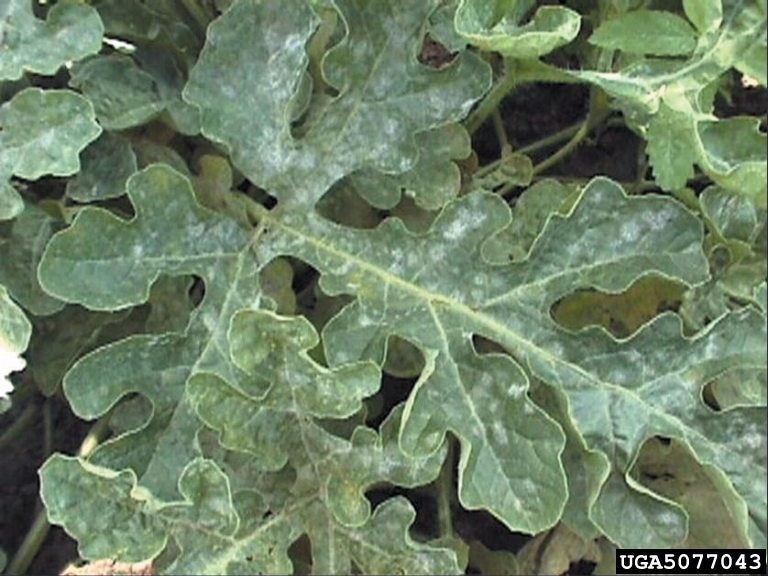Watermelon Powdery Mildew Control – Treating A Watermelon With Powdery Mildew


Powdery mildew in watermelons is one of the more common illnesses that affect this popular fruit. It is also common in other cucurbits: pumpkins, squash, and cucumber. You can use management strategies to control or prevent an infection or apply fungicides to treat affected plants.
About Watermelon Powdery Mildew
The presence of powdery leaves on watermelon plants is the most common sign of this fungal infection, and it is likely the first symptom you will notice in your garden. These are colonies of fungus, and they infest the leaves but rarely grow on the actual fruit. In addition to the white, powdery substance, you may also see yellow spots on your watermelon leaves. While the fungus that causes watermelon powdery mildew does not attack the fruits, the damage it does to leaves can impact your fruit harvest. The leaves can become damaged enough to fall off, which leads to smaller fruit. The fruit may also get sunburned because of lessened leaf coverage.
Treating Watermelon with Powdery Mildew
Conditions that promote infection and that make it more likely to spread include warmth, shade, and moisture. A lack of airflow and a lot of shade around and between plants helps the infection take hold, so planting your watermelons with plenty of space can help prevent powdery mildew. There are no resistant varieties of watermelon, so making sure conditions are not too crowded or soggy is important for prevention. You can also take steps to avoid infection in later-growing cucurbits, like winter squash and pumpkin, by planting them upwind of infected watermelons. The spores of the mildew travel and infect new plants through the air. If the infection takes hold in your watermelon patch, you can treat it with fungicides. Early and appropriate use of fungicides can help you save your crop for the year, or at least minimize losses. Find the right fungicide at your local nursery, but keep in mind that powdery mildew can become resistant so use two different fungicides in rotation.
Gardening tips, videos, info and more delivered right to your inbox!
Sign up for the Gardening Know How newsletter today and receive a free copy of our e-book "How to Grow Delicious Tomatoes".

Mary Ellen Ellis has been gardening for over 20 years. With degrees in Chemistry and Biology, Mary Ellen's specialties are flowers, native plants, and herbs.
-
 Looking For Plants To Give You The Soft And Fuzzies? Try These 5 Fuzzy Leaf Plant Options
Looking For Plants To Give You The Soft And Fuzzies? Try These 5 Fuzzy Leaf Plant OptionsLovers of texture, drama, silver foliage and tactile plants will adore these special sensory garden additions. These fuzzy leaf plant options will leave you all aglow
By Susan Albert
-
 Get Ready For A Summer Of Hummers! Grow These Full Sun Hummingbird Plants and Flowers
Get Ready For A Summer Of Hummers! Grow These Full Sun Hummingbird Plants and FlowersIf you’re lucky enough to enjoy a sunny backyard, make sure you are maxing out on your pollinator opportunities and grow these full sun hummingbird plants and flowers
By Tonya Barnett